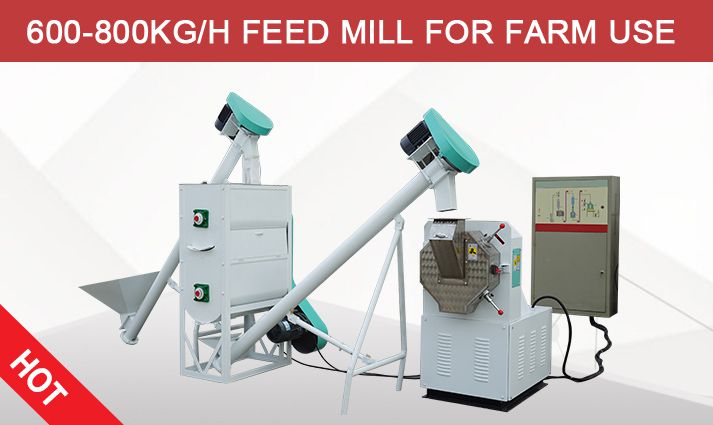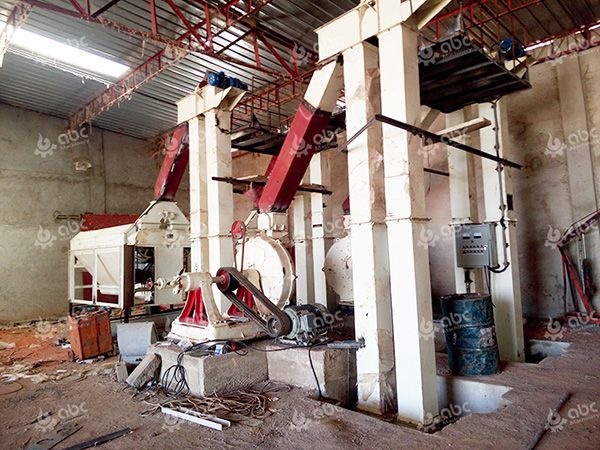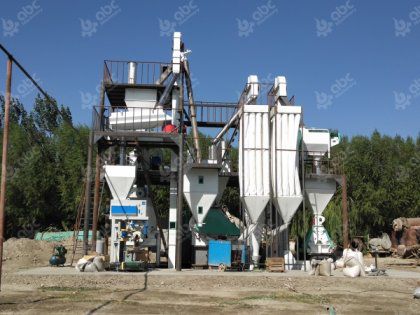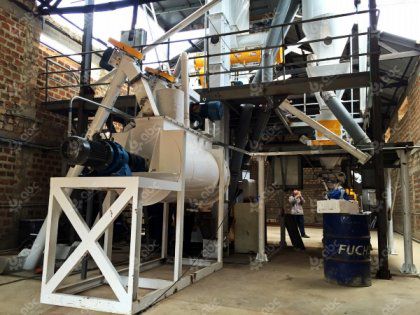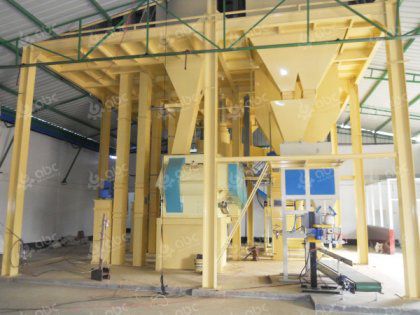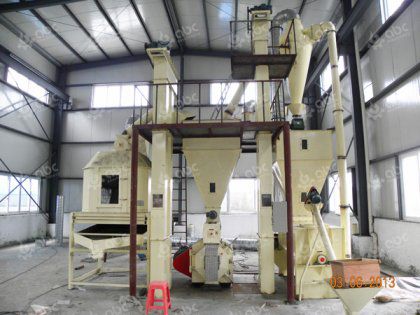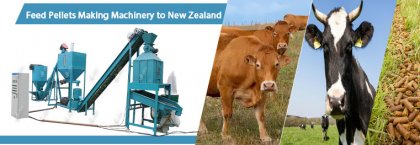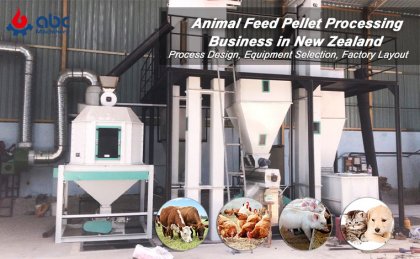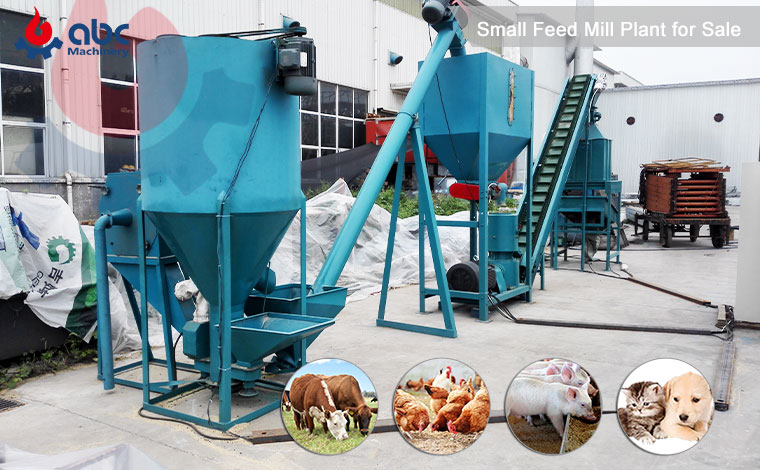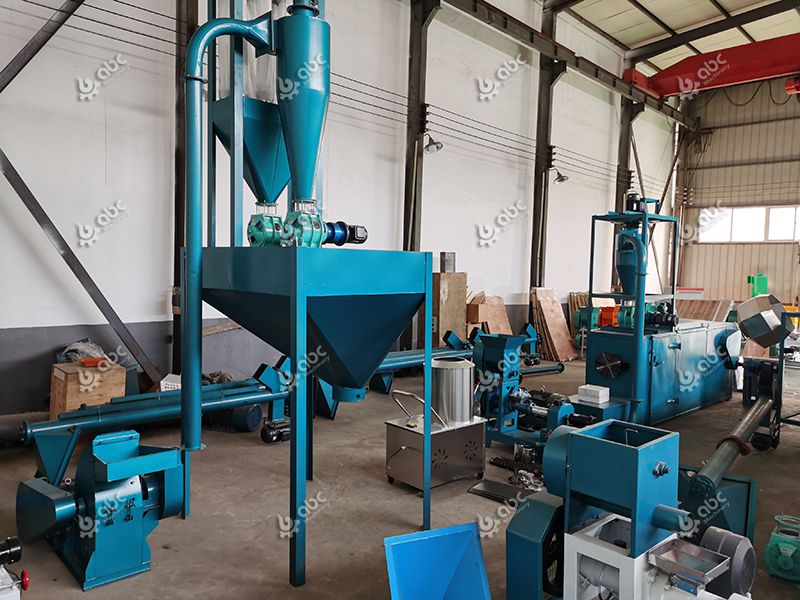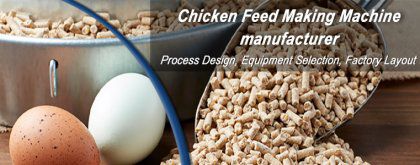What is Compound Feed?
Compound feed refers to the feed that produced on the basis of animals’ different growth stages, different physiological requirements and different production uses, as well as the experiment and Research on the evaluation of feed nutrition value, and according to the scientific formula that mix feed of various different sources uniformly in a certain proportion and processed by prescribed technology. (See more: how to make pellet feed for chicken>>)
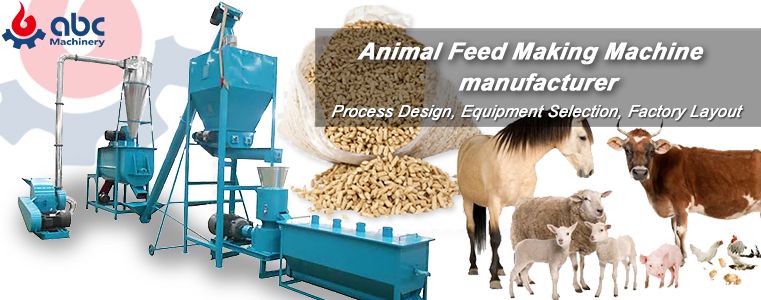
Animal Compound Feed Development
The production of compound feed began in the early twentieth Century. Since the 1950s, as the understanding of the needs of amino acids, vitamins and trace elements of domestic animals is becoming more and more accurate, antibiotics and sulfonamides are incorporated into the feed field as additives, and the production of compound feed grew rapidly. Its application first became popular in Europe and America, and soon spread to Asia and elsewhere. (Learn more:how to make fish feed pellets>>)
According to nutritional components and uses, compound feed is classified into:
- Complete formula feed, concentrated feed, concentrate mixture, feed additive premix, superconcentrate, mixed provender, artificial milk or milk substitute feed;
- Mash feed, pellet feed (Related knowledge: How to make feed pellets?), crumbled feed, expanded feed, floating feed, cubed feed, etc.

Mash Feed, Crumbled Feed, Pellet Feed
Any questions of making compound animal feed? Contact us for more information!
At present, the commonly used technological processes for compound feed production includes manual addition batching, volumetric batching, one bin one scale batching, multi bins multi scales batching, multi bin one scale batching, etc.
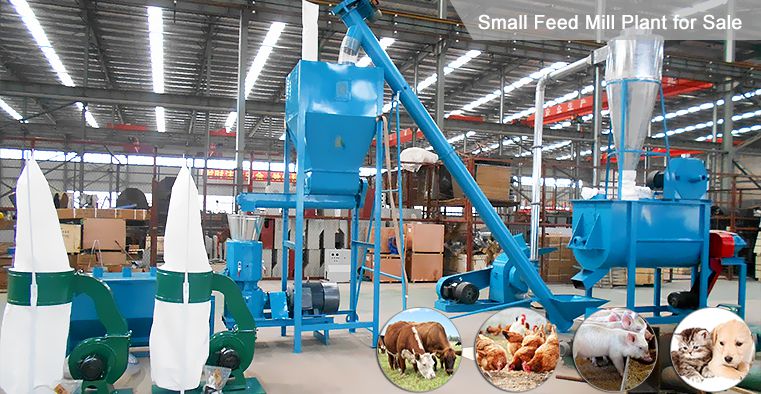
- Manual addition batching
The manual control addition batching is used in small feed processing plants and feed processing workshops. This batching process is to weigh all the ingredients manually, and then dump the weighted materials manually into the mixer. Since all the steps are manually metering and batching, so the technology is very simple, and the equipment investment is less, the product cost is reduced, the measurement is flexible and accurate. But the manual operating environment is poor, the labor intensity is high, and the labor productivity is very low, especially after the worker's long labor time, it is easy to make mistakes.
- Volume proportioning
Under every batch bin, there is one set of batching devices.
- One bin one scale batching
- Multi bins multi sclaes batching
- Multi bin one scale batching
The materials measured are grouped according to their physical characteristics or weighing ranges, and each group is equipped with corresponding metering devices.
- With compound feed processing, the loose raw amterials are produced into high density animal feed pellets. It concentrates the research results of animal nutrition and feed science, and can mix all kinds of ingredients (raw materials) together, so as to ensure the stability and consistency of the effective components and improve the nutritional and economic benefits of the feed.
- The finally produced compounded animal feed can be directly fed or simply treated to facilitate user use, facilitate transportation and preservation, and reduce the cost in transportation, storage, labors and energy consumption.
- In compound poultry feed manufacturing process, it is directly related to the economic benefit and reputation of the enterprise that whether the nutritional needs and physiological characteristics of the animals can be formulated, and the lowest formula cost and the best feeding effect can be obtained.
Setting Up Your Compounded Animal Feed Processing Machines Plant
-
Raw Materials

Raw Materials for Compound Feed Processing
Make sure the animal feed formula is based on the nutrition requirement of your animals’ growth, then finding the raw material supplier for building your plant. Various raw materials can be made into compounded animal feed pellets, including corn, wheat, soybean meal and other necessary vitamins agents etc. (Read more: cattle feed pellet machine>>)
-
Cost of Building Compound Feed Production Line
Before starting any business, you should make a budget. You should know what the cost of building a feed processing plant is. It mainly includes raw materials cost, land cost, equipment cost, labor cost, energy consumption cost and operation cost etc. (Related article: cost of poultry feed mill in nigeria>>)
-
Compound Feed Processing Machinery
Finding the reliable feed processing equipment manufacturer or supplier with a long history and rich experience. They will offer you high quality equipment and professional service. ABC Machinery is one famous animal pellet feed processing company, having engaged in this industry for more than 20 years, calculating rich experience in setting up small and large feed production projects with the best price. (Related article: how to make feed pellets at home>>)
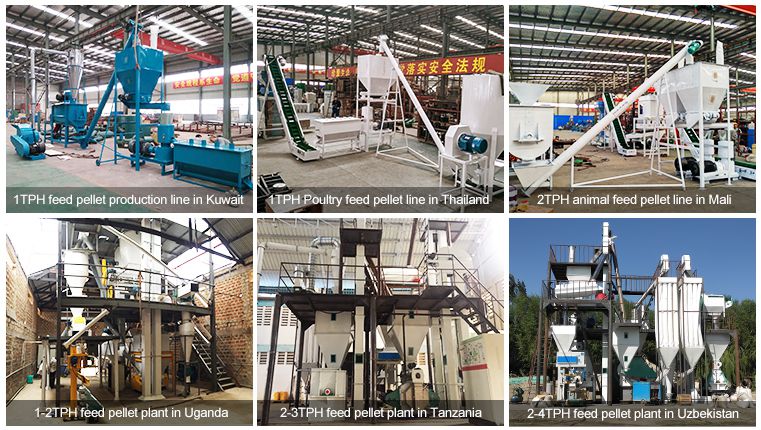
Sucessful Compound Feed Making Projects Setup Around the World
The pictures above are from our clients who had set up their own compound feed processing machinery factory for different applications. If you have any interest in building compound feed processing lines, please contact us for more information!
Classification of Compound Feed Processing
Besides classified based on the feeding animal varieties, compound feed is classified into 4 main categories:
- Additive premix:
Additive premix is a homogeneous mixture made of various feed additives plus carriers or diluents in accordance with a certain formula. Its specialized production can simplify the configuration process and improve the production efficiency. Its basic raw material additives can be generally divided into two categories: nutritional and non nutritional. Nutritional raw materials includes vitamins, trace elements, essential amino acids, and the latter includes growth promoting additives such as antibiotics, protective additives such as antioxidants, anti mildew agents, insect resistant agents, anti coccidiosis drugs such as anti coccidiosis drugs and other hormones, enzymes and colorants. In addition to the above active ingredients, additives also contain a certain amount of carrier or diluent. The additive premix which is made up of a class of feed additives is called a single additive premixture, such as premixture of vitamin and trace element; while the additive premix which is made up of several kinds of feed additives is called synthetic additive premixture or additive premixture for short.
(图片:小型预混料生产线一张 描述:Additive Premix Feed Processing Machienry Plant for Sale)
A carrier in feed premix or additive premix is a kind of edible material that can accept and carry powdery active ingredients, with rough surface or small holes. The commonly used carriers are coarse wheat flour, wheat bran, rice hull powder, corn cob powder, limestone powder and so on. Thinners are also edible materials, but do not require rough surfaces or small holes. The two function as to enlarge the volume and facilitate the mixing uniformity.
- Concentrate feed
Concentrate feed is also known as balanced compound or vitamin protein supplement. It is made up of additives, premix, protein feed, calcium, phosphorus and salt according to feed formula. It is one of the components of full price compound feed. As concentrate feed is necessary to add energy feed to form a complete formula feed, so when preparing, it is necessary to know the composition of energy feed that is intended to match, so as to ensure the balance of nutrition.
(图片:精饲料生产线一张 描述:Concentrate Feed Production Equipment Line for Sale)
For example, feeding Broilers, the concentrated feed in the early stage of fattening usually accounts for 30% of the complete formula feed and energy feed accounts for 70%. At the final fattening period, the former accounts for 20%, the latter 80%. The concentrate feed of ruminant livestock can be made from urea feed, such as urea and biuret, so as to save protein feed.
- Complete formula feed
Complete formula feed is a feed for a single stomach livestock, which is made from concentrate feed and energy feed. Energy feed is mainly made from corn, sorghum, barley, wheat, bran, fine rice bran, sweet potato flour, potato and some animal and vegetable oils. The full price feed can be mash; also can be pressed into feed pellets (granules) to prevent the stratification of feed components, maintain uniformity and facilitate feeding. Pellet feed is more suitable for domestic animals and fish. (Learn more about animal feed processing technology>>.)
(图片:全价饲料生产线一张 描述:Complete Formula Feed Making Machienry Project on Sale)
- Concentrate mixture
Concentrate mixture is a feed for feeding ruminants, which is also made up of concentrate feed and energy feed; but a large amount of green and coarse feed should be added to animal feed.
(图片:精细混合料生产线一张 描述:Concentrate Mixture Animal Feed Processing Equipment Plant)
NOTE: In addition to the above 4 basic types of formula feed, a number of intermediate types of products can also be produced. In order to strengthen the quality management of feed, many countries have issued the feed laws and regulations to ensure the quality, the nutritional value and the safety of the human and animal in the form of law.
Buy compound feed processing machinery from ABC Machinery at factory price, get technical instruction of compound feed process and business plan to set up compound feed processing projects in Philippines, Uzbekistan, Lithuania, Nigeria, Tanzania, etc., at low cost. If you have any interest in setting up compound feed processing plants, please contact us for free!



